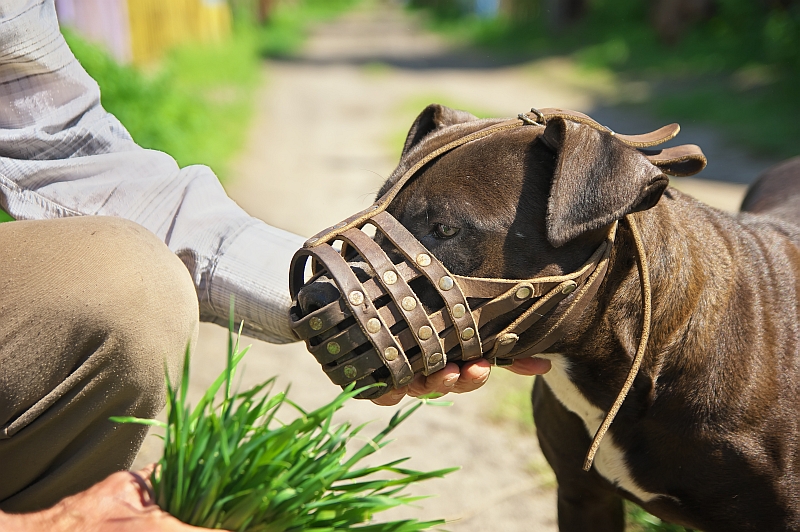Deciding (or having to) put a muzzle on your dog can be an emotionally challenging task; however, some behavioral issues, or local legislation make it a necessity. Faced with this requirement, owners, of course, want to get the best and most comfortable muzzle for their dog.
When selecting a dog muzzle it is tempting to pick something that looks good, but that shouldn’t overshadow the need to have a muzzle that will be comfortable for your dog.
Types of Muzzles
There are two main types of muzzles (excluding material differences): basket muzzles and occlusion muzzles. Each type is designed for a specific use-set.
Basket muzzles allow the dog to open its mouth, and pant. This is especially important if the dog is to be muzzled for an extended period, for example when going for a walk. Dog’s dissipate body heat through panting as they have no sweat glands, and if they are unable to pant for an extended period, they can suffer heat exhaustion or worse.
Occlusion muzzles are designed to keep the dog’s mouth completely shut, and are mostly used during grooming or veterinary visits, assuming the dog is aggressive enough to warrant such a measure.
Types of Muzzle Material
There are two types of recommended muzzle material, leather and wire. There are also nylon and plastic options; however, those materials wear out or get destroyed quite easily. The wire muzzle is the toughest option; however, if you live in a climate that is either very hot or very cold, it may not be the best option as the metal can get very hot or cold and causing the dog discomfort or injury. Regardless of the material, do make sure that your dog can comfortably pant when wearing the muzzle.
Dos & Don’ts
- Do make sure that the muzzle has a comfortable fit and allows for unrestricted panting
- Do keep in mind the climate in which you live, and select a muzzle material accordingly (i.e., don’t pick a metal muzzle for very cold or hot weather).
- Do make sure that wearing a muzzle is a positive experience for your dog. Give him affection and positive feedback when putting on the muzzle and while he is wearing it.
- Don’t utilize a muzzle to address an aggression problem. This should be dealt with through training.
- Don’t leave your dog unattended while muzzled. It could become uncomfortable and results in scratching and eventual injury.
- Don’t use a muzzle to address any behavioral problem like chewing.

